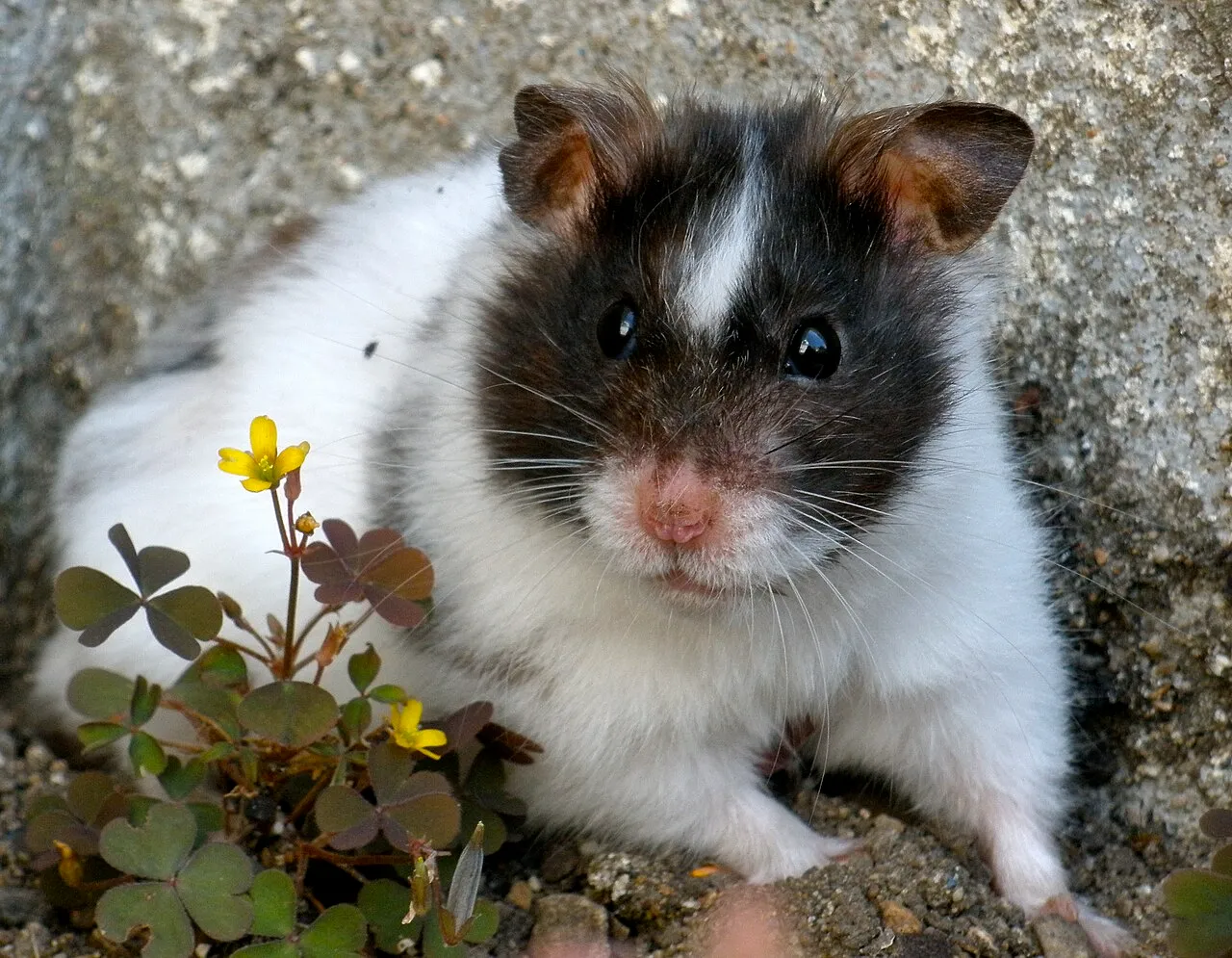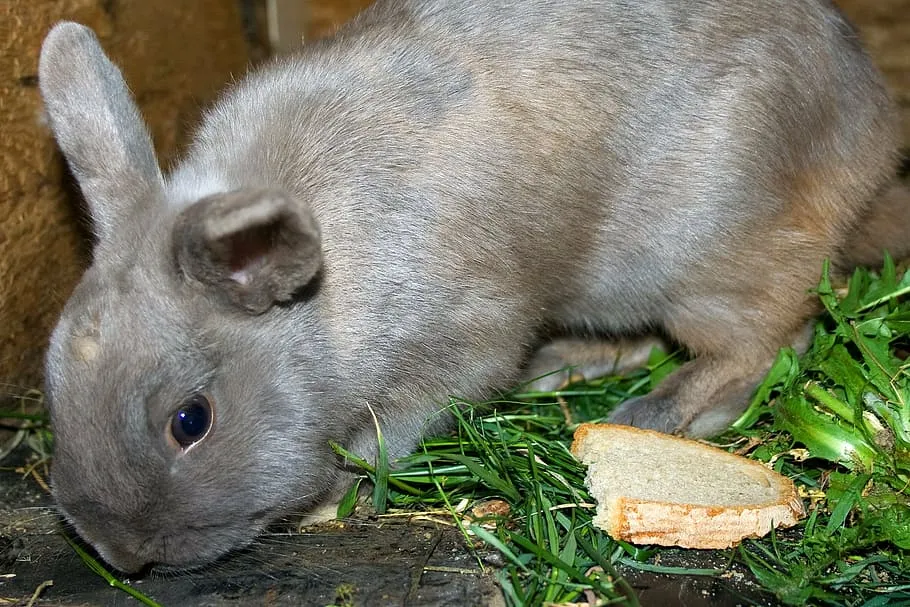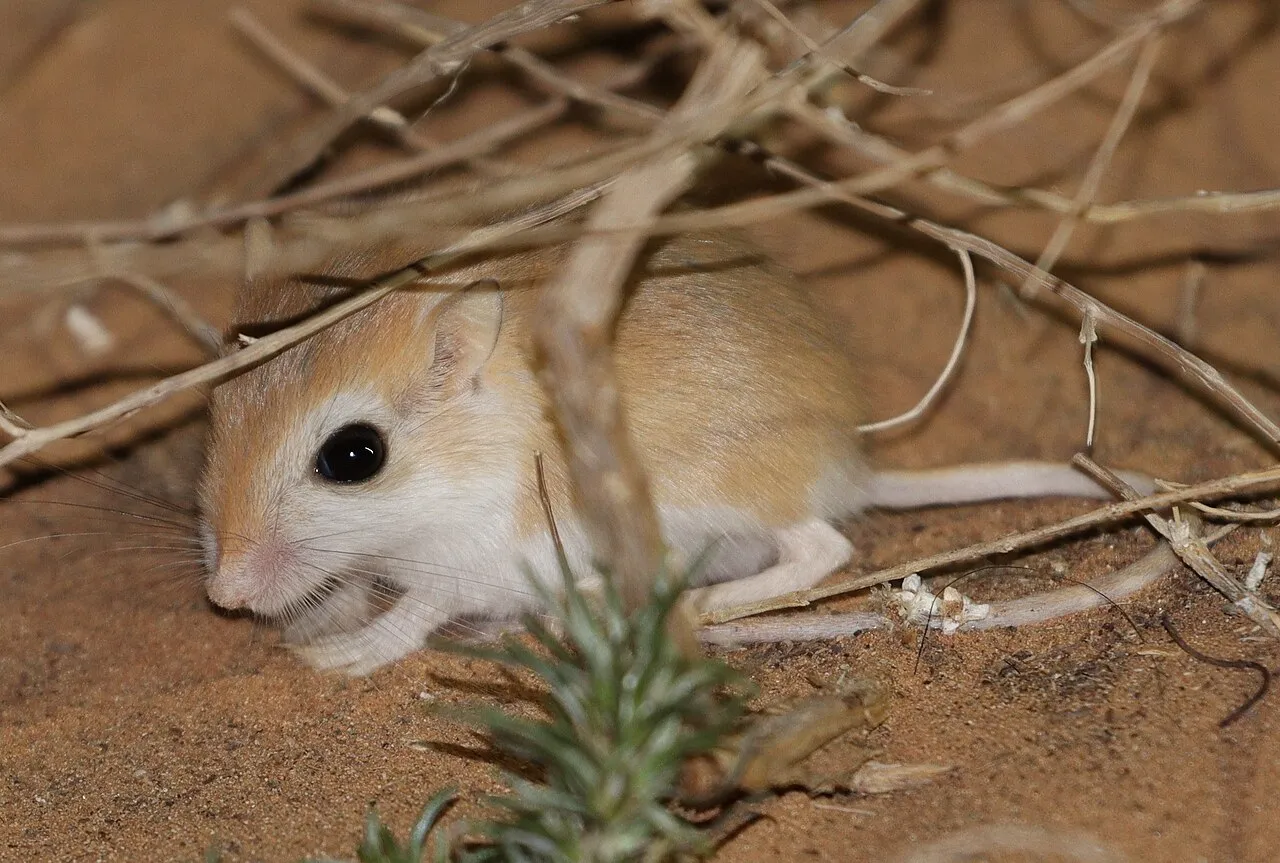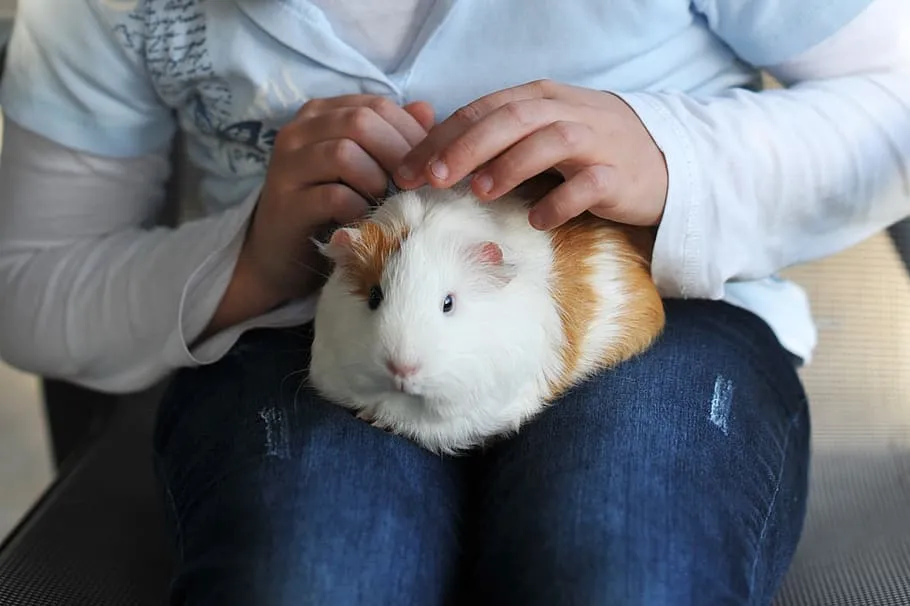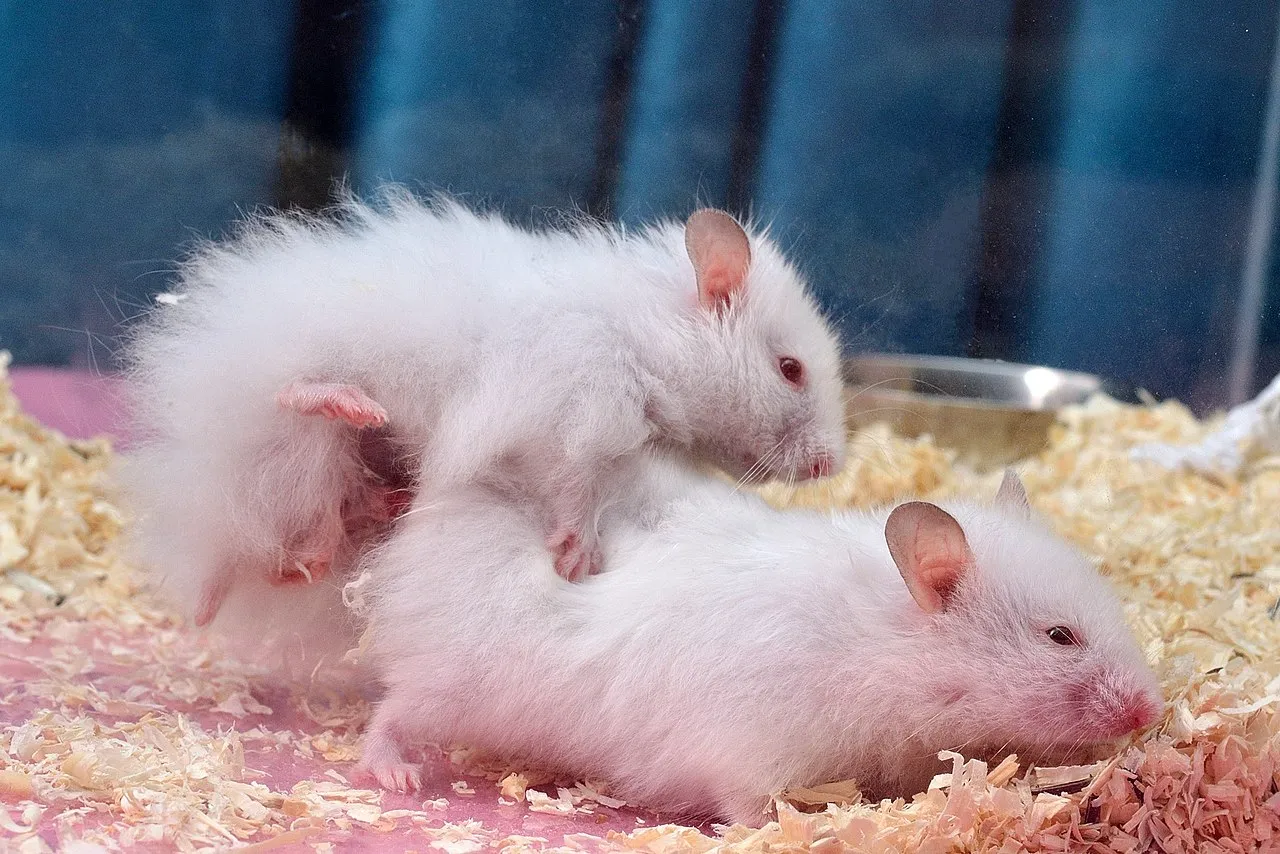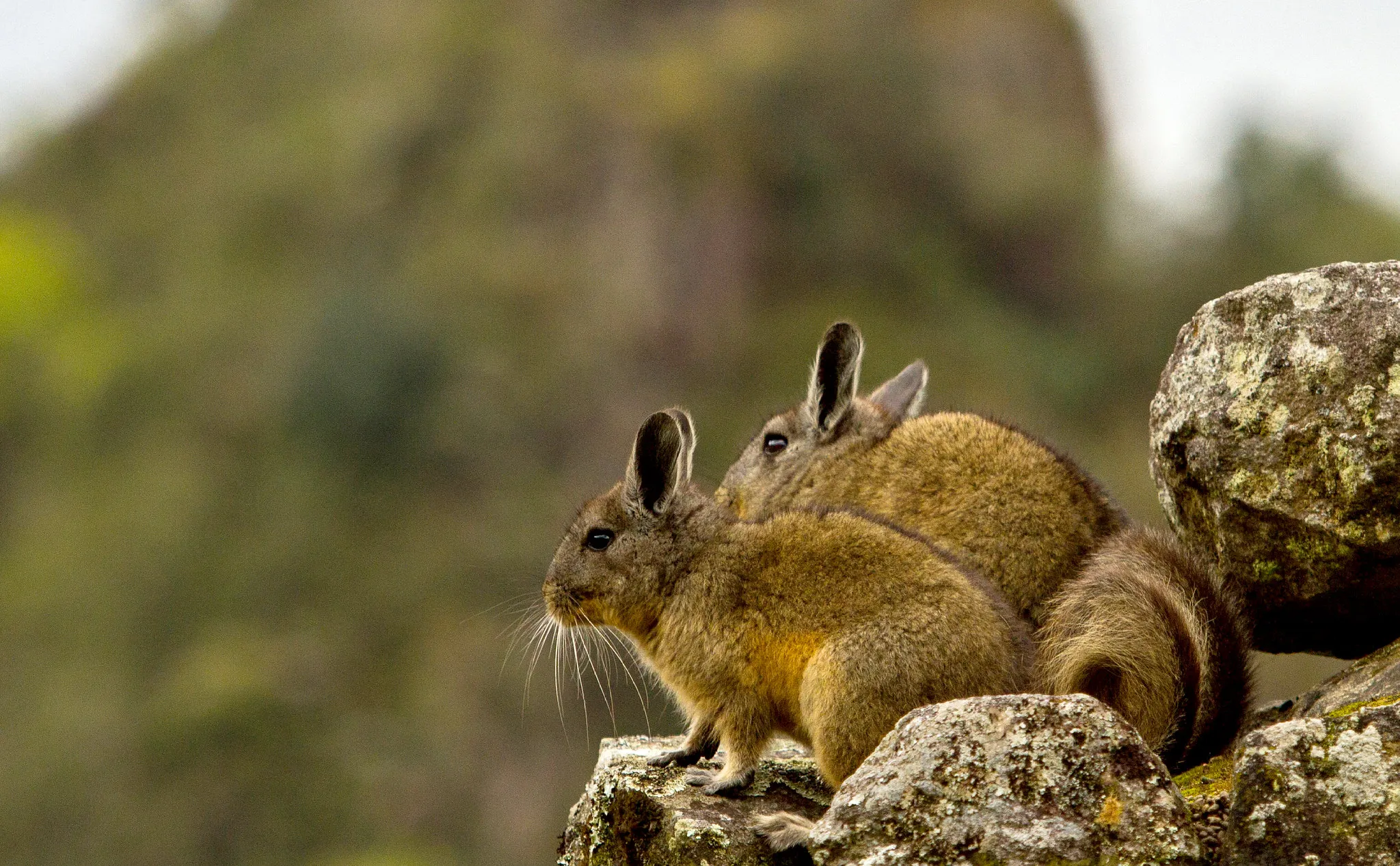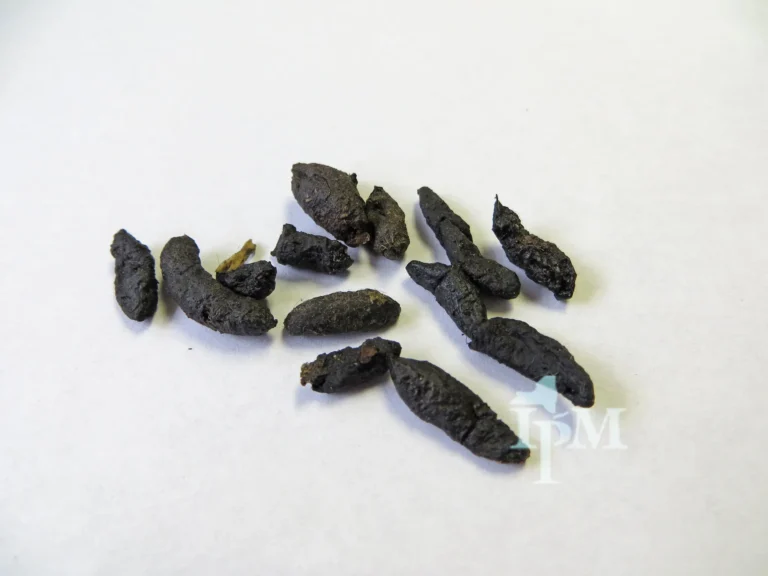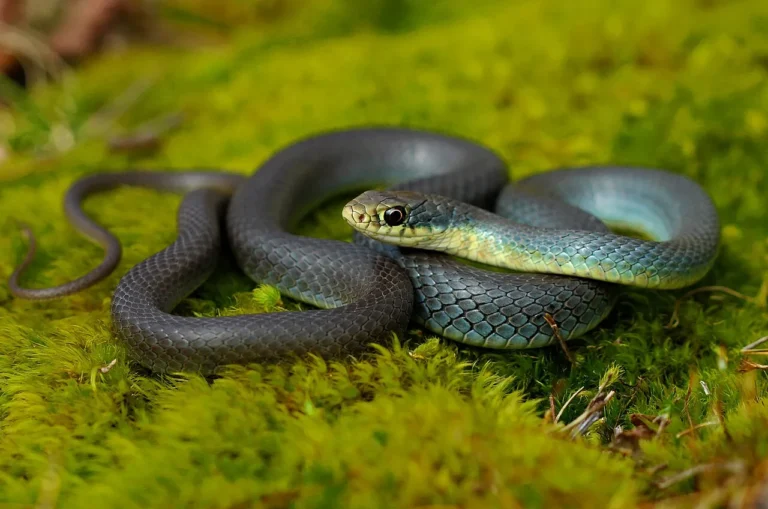Guinea Pig Vs Gerbil Size, Weight, Overall Comparison
Comparing guinea pigs and gerbils delves into key distinctions in size, diet, behavior, and suitability as pets, offering insights for potential owners.
I. Size and Physical Characteristics:
– Guinea pigs are noticeably larger than gerbils, a distinction that influences their housing needs, nutritional requirements, and overall care. Understanding these size differences is crucial for providing appropriate care.
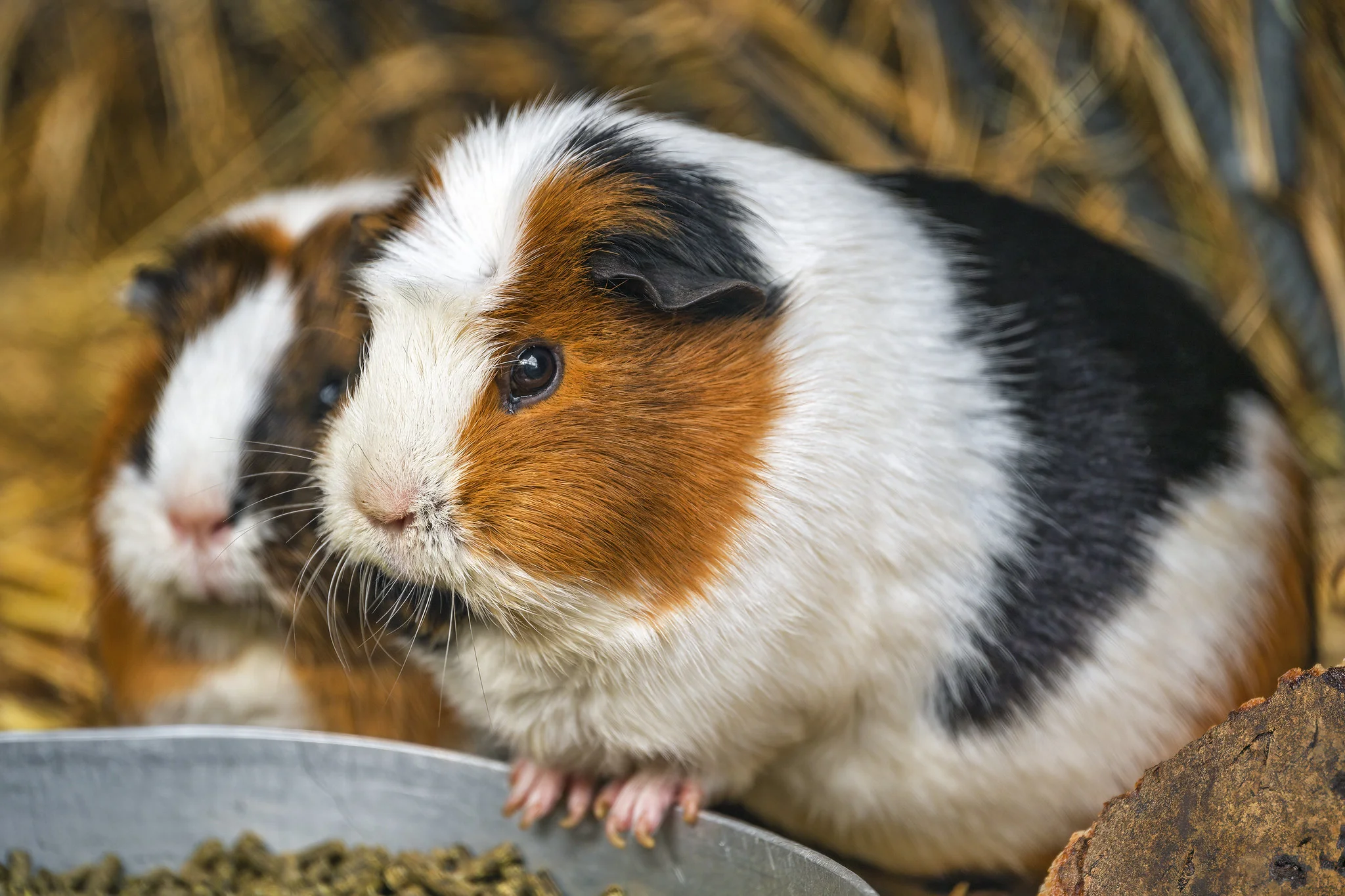
II. Diet and Nutritional Needs:
– Guinea pigs are herbivores, primarily feeding on plants, while gerbils are omnivores, incorporating both plant and animal matter into their diet. Recognizing their distinct nutritional needs ensures proper feeding and overall health.
III. Behavior and Temperament:
– Guinea pigs tend to have outgoing personalities with their owners but may display timidity around new people or larger animals. Gerbils, on the other hand, are known for their social nature and may thrive in group settings.
IV. Housing Considerations:
– Guinea pigs may require more spacious enclosures due to their larger size, whereas gerbils, being smaller, can satisfy their natural digging and tunneling instincts with a setup that offers vertical space. Tailoring housing arrangements to each species’ needs is essential.
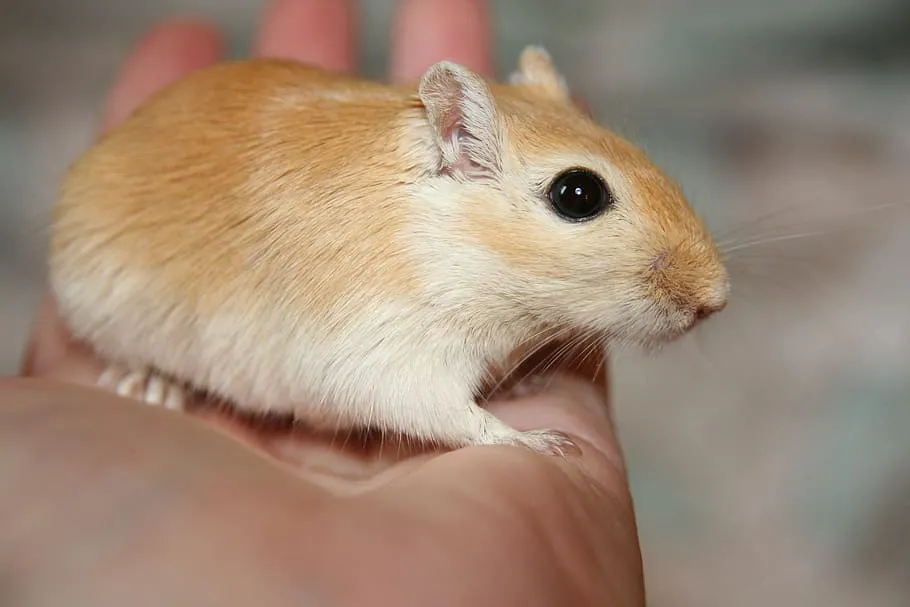
V. Suitability as Pets:
– Choosing between a guinea pig and a gerbil depends on individual preferences, living space, and the level of interaction desired. Guinea pigs may be a better fit for those seeking a larger, more relaxed companion, while gerbils may appeal to those interested in smaller, social animals.
*Details of Comparison
| Criteria | Guinea Pig | Gerbil |
| Taxonomy | Caviidae, Cavia genus |
Muridae, Gerbillinae subfamily
|
| Appearance | Compact, stout, rounded face |
Sleek, slender, pointed face
|
| Size (inches) | 8-10 | 4-5 |
| Weight (pounds/ounces) | 1.5-2.5 | 2-4 |
| Dentition/Bite Force (PSI) | Herbivorous, lower documented bite |
Omnivorous, adapted bite force
|
| Physical Offensive Advantages | Limited offensive capabilities | Quick and agile |
| Physical Defensive Advantages | Limited speed and agility |
Quick reflexes, burrow utilization
|
| Speed (mph) | 5-10 | Up to 10 |
| Agility | Moderate agility | Highly agile |
| Senses | Good hearing/smelling, poor eyesight |
Excellent hearing/smelling, keen eyesight
|
| Overall Physical Capacity | Grazing, moderate activity |
Agile, efficient burrowing
|
| Habitat Preference/Region | South America, grassy plains |
Africa, Asia, Middle East, arid regions
|
| Tracks | Padded feet, signs of grazing |
Bounding hops, burrow entrances
|
| Lifespan (years) | 5-7 | 2-4 |
| Mode of Feeding | Herbivorous | Omnivorous |
| Intelligence | Social intelligence |
Problem-solving abilities
|
| Social Behavior | Social, strong bonds |
Social, colony living
|
| Mode of Reproduction | Longer gestation, smaller litters |
Shorter gestation, larger litters
|
| Parental Behavior | Strong maternal instincts |
Both parents care for young
|
| Proximity to Human Areas | Domesticated, common pets |
Domesticated, may require specific care
|
| Behavior Toward Humans | Docile, enjoys interaction |
Friendly, may require careful handling
|
| Danger Posed to Humans | Minimal danger, docile |
Low risk, may nip if threatened
|
| Associated Precautions | Regular vet care, clean environment |
Dental care, proper cage design
|
| Conservation Status | Domesticated, not at risk |
Some species vulnerable or endangered
|
1. Taxonomy:
Guinea Pig:
Kingdom: Animalia
Phylum: Chordata
Class: Mammalia
Order: Rodentia
Family: Caviidae
Genus: Cavia
Species: C. porcellus
Gerbil:
Kingdom: Animalia
Phylum: Chordata
Class: Mammalia
Order: Rodentia
Family: Muridae
Subfamily: Gerbillinae (for common pet gerbils)
Various species within the subfamily Gerbillinae, such as Meriones unguiculatus (Mongolian gerbil)
2. Appearance:
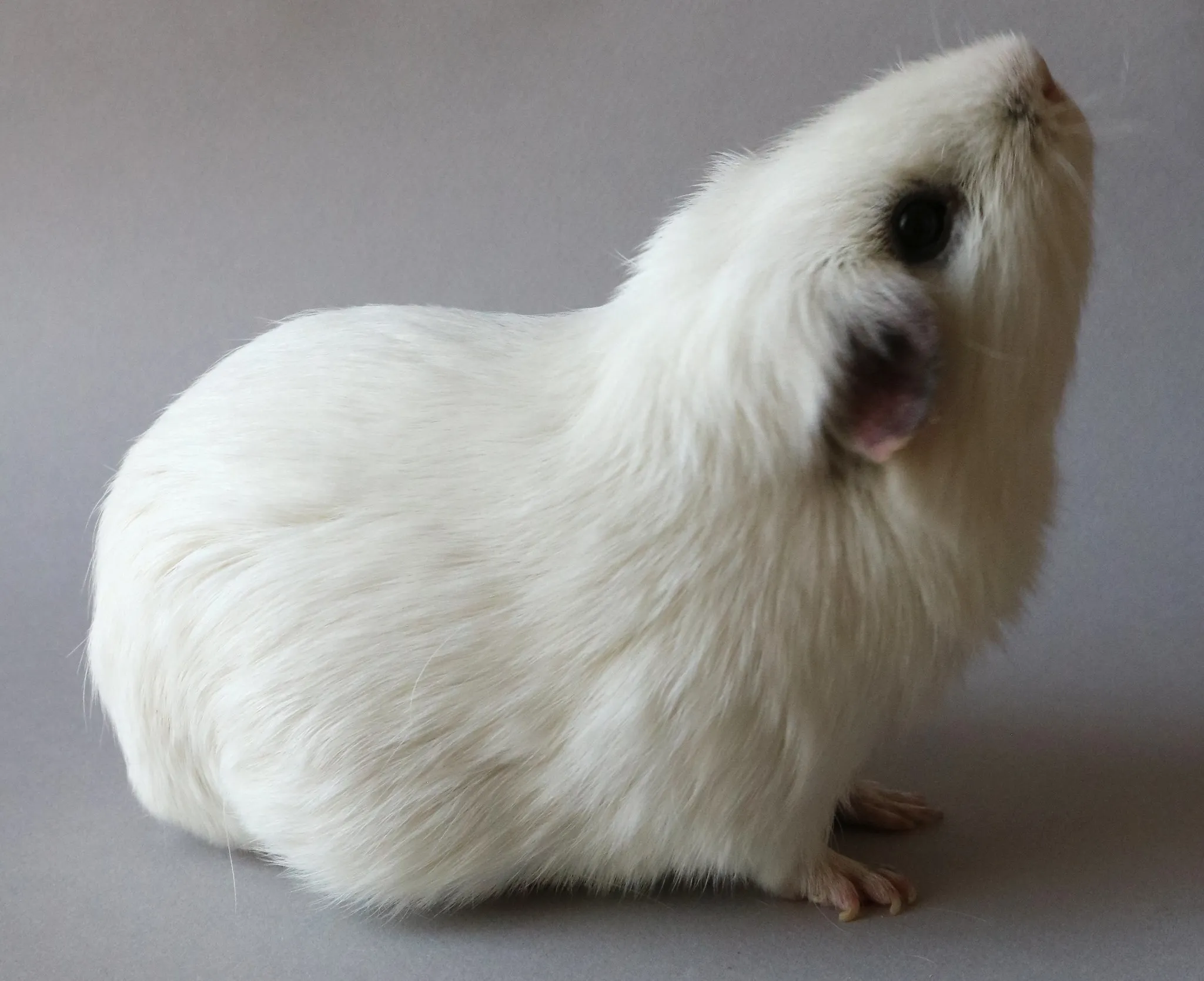
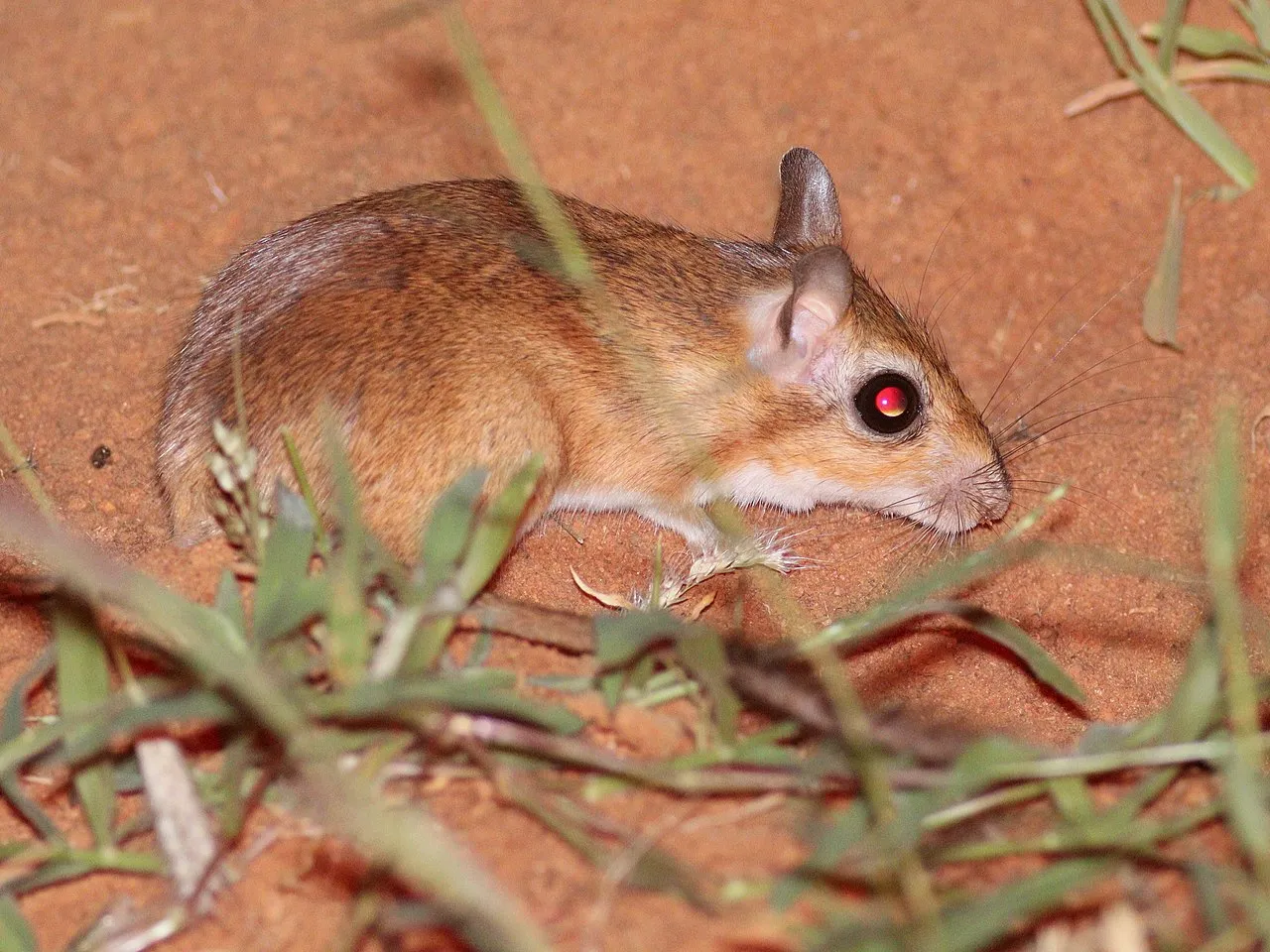
Guinea Pig:
Compact, stout body with a rounded face.
Short, smooth fur in various colors and patterns.
Ears are small and rounded.
Gerbil:
Sleek, slender body with a pointed face.
Soft, smooth fur, typically in shades of brown or gray.
Ears are large and stand upright.
Comparison:
Guinea pigs have a more robust appearance, while gerbils are slender and agile.
Guinea pigs often exhibit a wider range of coat patterns compared to gerbils.
Ecological Implications:
The distinct appearances of these rodents may influence their adaptability to different environments.
3. Size:
Guinea Pig:
Average length of 8-10 inches (20-25 cm).
Gerbil:
Average length of 4-5 inches (10-13 cm).
Comparison:
Guinea pigs are larger, making them more suitable for owners looking for a substantial pet.
Ecological Implications:
Size affects the ecological niche, with guinea pigs potentially having different roles in ecosystems compared to smaller gerbils.
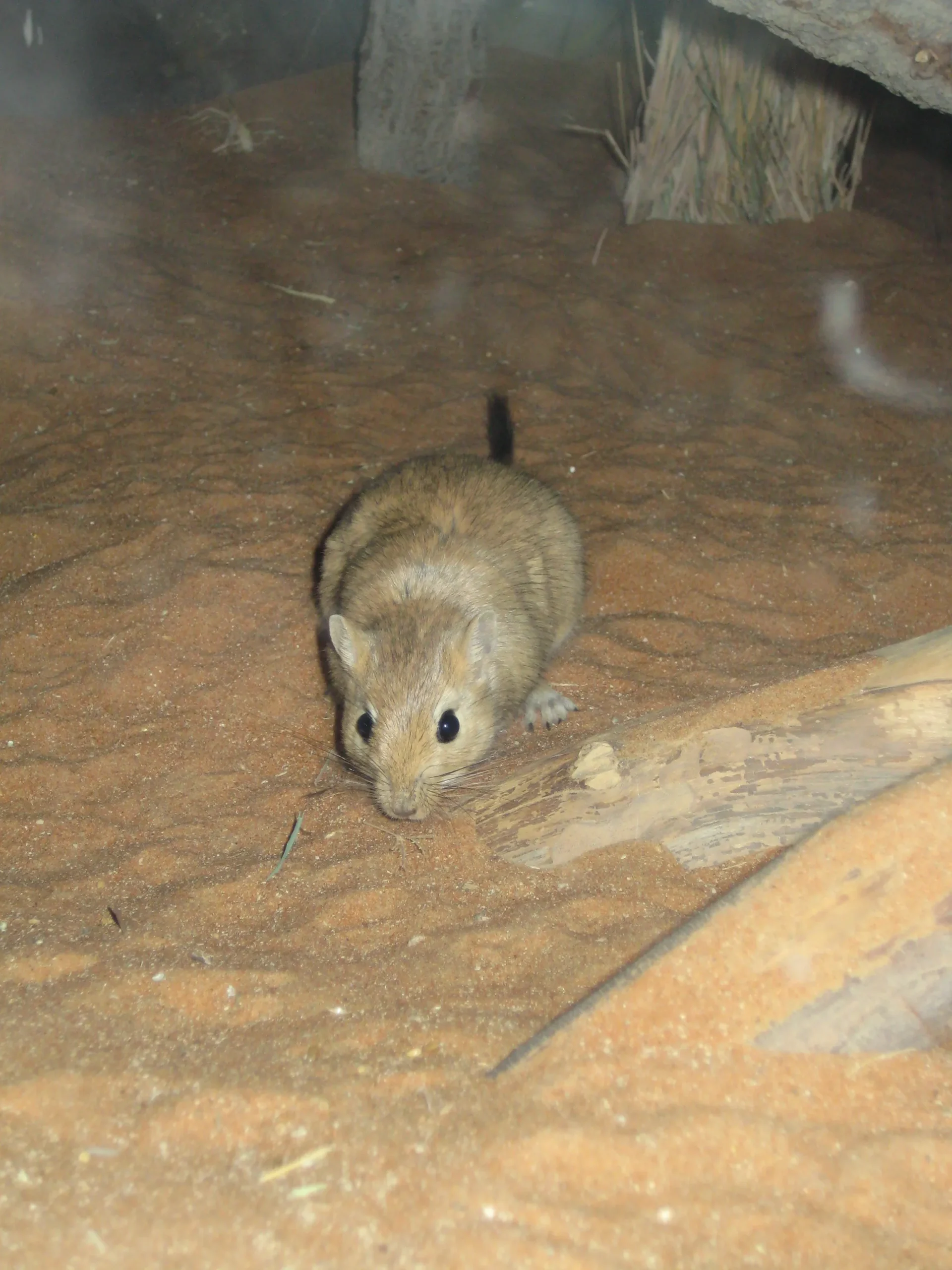
4. Weight:
Guinea Pig:
Typically weighs between 1.5 to 2.5 pounds (0.7-1.1 kg).
Gerbil:
Weighs around 2-4 ounces (56-113 grams).
Comparison:
Guinea pigs are significantly heavier than gerbils.
Ecological Implications:
Weight influences factors like energy requirements, predator-prey dynamics, and resource utilization in their natural habitats.
5. Dentition and Bite Force (PSI):
Guinea Pig:
Herbivorous with continuously growing incisors. Bite force not well-documented but relatively lower.
Gerbil:
Omnivorous with sharp incisors. Bite force not well-documented but adapted for their varied diet.
Comparison:
Gerbils have a more versatile diet, influencing their dental structure.
Ecological Implications:
Differences in dentition highlight their adaptation to specific food sources in their respective habitats.
6. Physical Offensive Advantages:
Guinea Pig:
Limited offensive capabilities; relies on social behavior for defense.
Gerbil:
Quick and agile, capable of swift movements.
Comparison:
Gerbils have a more agile and evasive nature, potentially aiding in defensive maneuvers.
Ecological Implications:
Agility may be crucial for gerbils to escape predators or catch agile prey.
7. Physical Defensive Advantages:
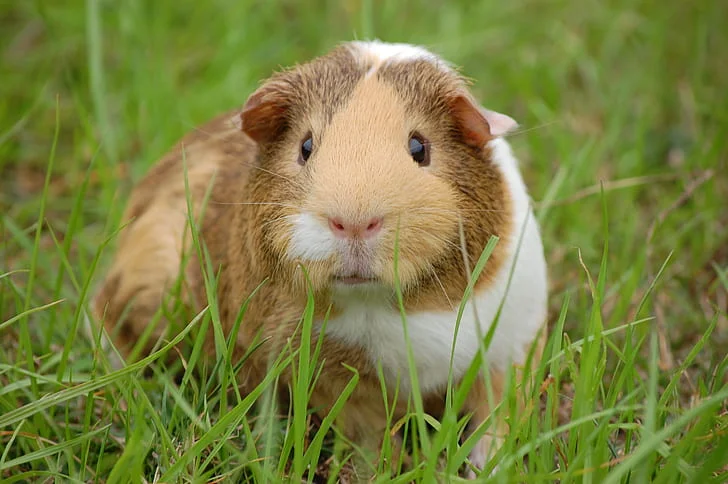
Guinea Pig:
Limited speed and agility, often relies on hiding or vocalizing when threatened.
Gerbil:
Quick reflexes, can escape into burrows, and exhibit tail-flagging as a warning.
Comparison:
Gerbils possess more effective defensive strategies through speed and burrow utilization.
Ecological Implications:
Defensive mechanisms contribute to the survival and predator avoidance strategies in their respective habitats.
8. Speed (Km/hour or Mile/hour):
Guinea Pig:
Moves at a moderate speed, around 5-10 mph (8-16 km/h).
Gerbil:
Agile and fast, capable of reaching speeds up to 10 mph (16 km/h).
Comparison:
Gerbils have a higher top speed compared to guinea pigs.
Ecological Implications:
Speed is essential for predator evasion and efficient foraging in gerbil habitats.
9. Agility:
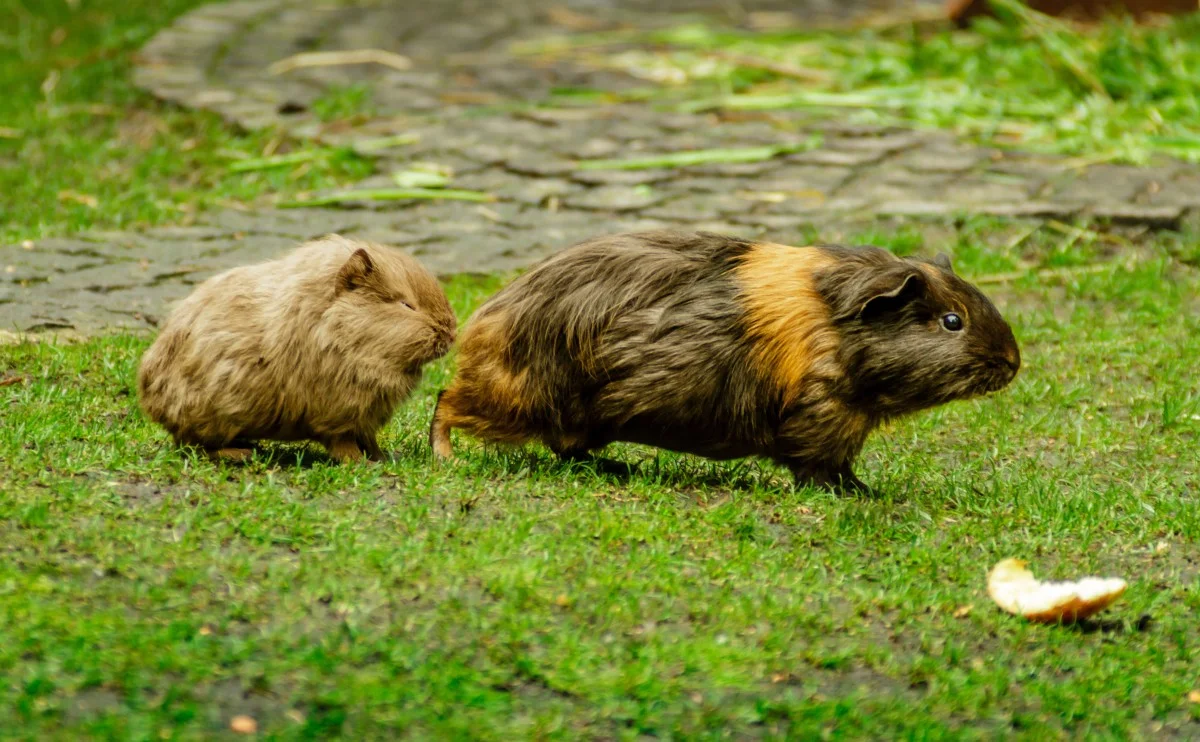
Guinea Pig:
Moderate agility, not known for quick movements.
Gerbil:
Highly agile, capable of sharp turns and rapid escapes.
Comparison:
Gerbils demonstrate superior agility compared to guinea pigs.
Ecological Implications:
The agility of gerbils is advantageous for navigating complex terrains and avoiding predators.
10. Senses:
Guinea Pig:
Good sense of hearing and smelling; relatively poor eyesight.
Gerbil:
Excellent sense of hearing and smelling; keen eyesight.
Comparison:
Gerbils generally have better eyesight compared to guinea pigs.
Ecological Implications:
Differences in sensory capabilities are adaptations to the specific challenges of their habitats.
11. Overall Physical Capacity:
Guinea Pig:
Designed for grazing and moderate activity; not built for sustained speed or agility.
Gerbil:
Well-adapted for quick, agile movements and efficient burrowing.
Comparison:
Gerbils showcase a higher overall physical capacity for agility and quick responses.
Ecological Implications:
Physical capacity aligns with the specific ecological roles and challenges of each species in their native environments.
12. Habitat Preference(s) and Geographic Region:
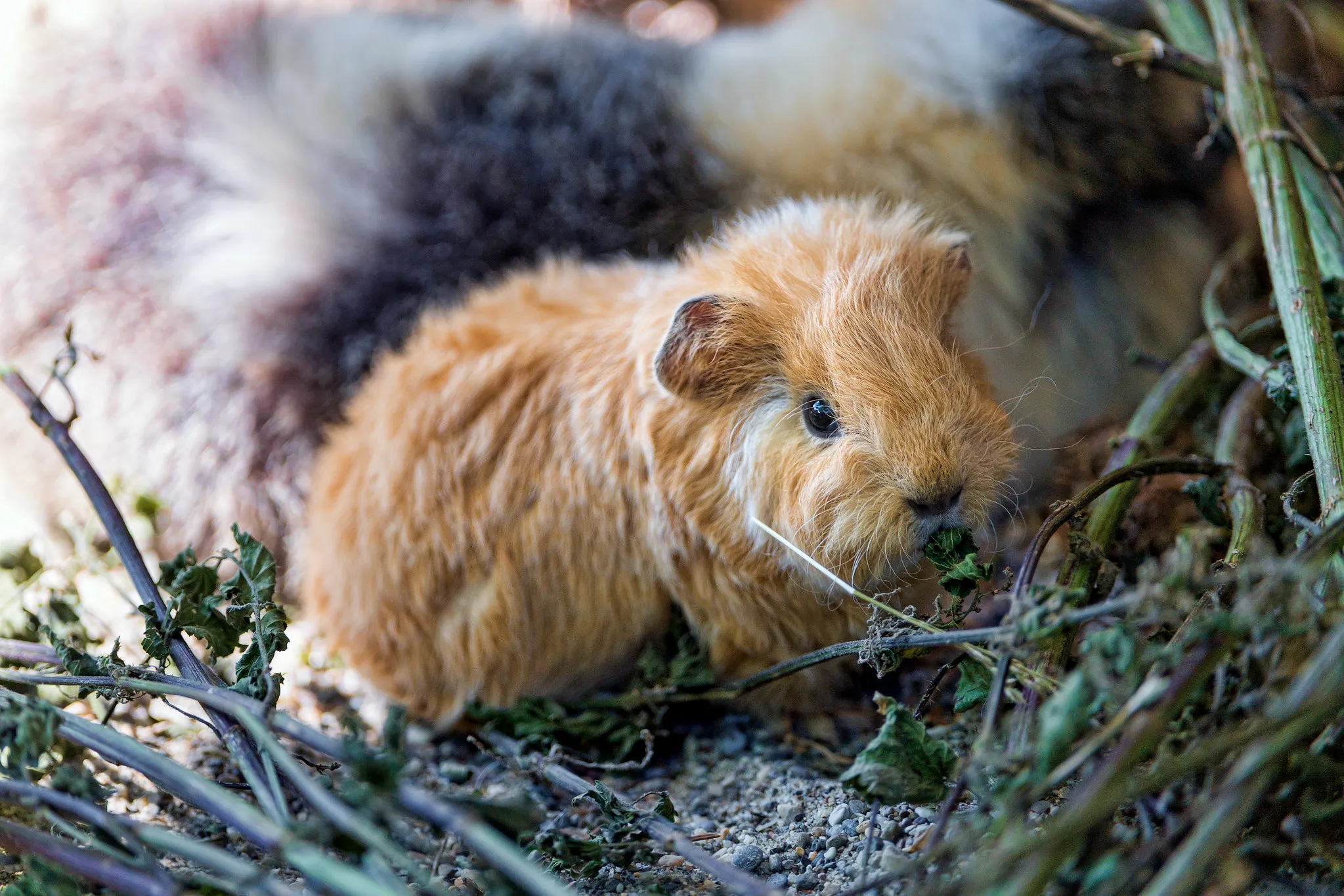
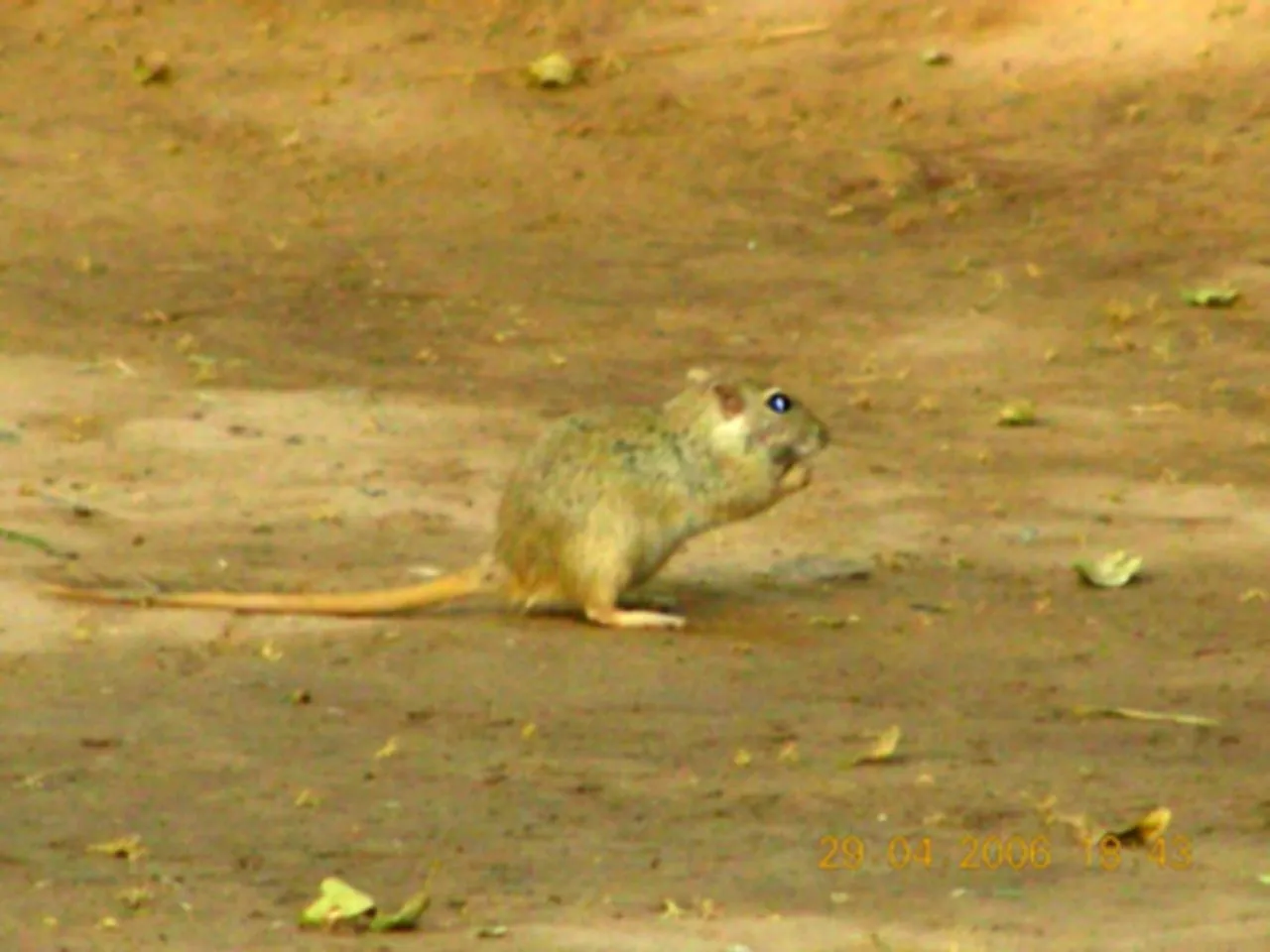
Guinea Pig:
Native to South America; prefers grassy plains and open spaces.
Gerbil:
Found in arid regions of Africa, Asia, and the Middle East; favors deserts and semi-arid landscapes.
Comparison:
Guinea pigs thrive in grassy environments, while gerbils are adapted to arid landscapes.
Ecological Implications:
Habitat preferences reflect adaptations to specific environmental conditions and available resources.
13. Tracks:
Guinea Pig:
Leave distinct tracks with their padded feet; may show signs of grazing activity.
Gerbil:
Tracks exhibit a pattern of bounding hops; may include evidence of burrow entrances.
Comparison:
Track patterns differ based on the distinct locomotion styles of each species.
Ecological Implications:
Tracking can provide insights into the behaviors, movement patterns, and habitat use of these rodents in the wild.
14. Lifespan:
Guinea Pig:
Typically lives 5 to 7 years, though some can reach 8 years or more.
Gerbil:
Average lifespan of 2 to 4 years.
Comparison:
Guinea pigs generally have a longer lifespan compared to gerbils.
Ecological Implications:
Lifespan can impact reproductive strategies and ecological roles within their respective habitats.
15. Mode of Feeding:
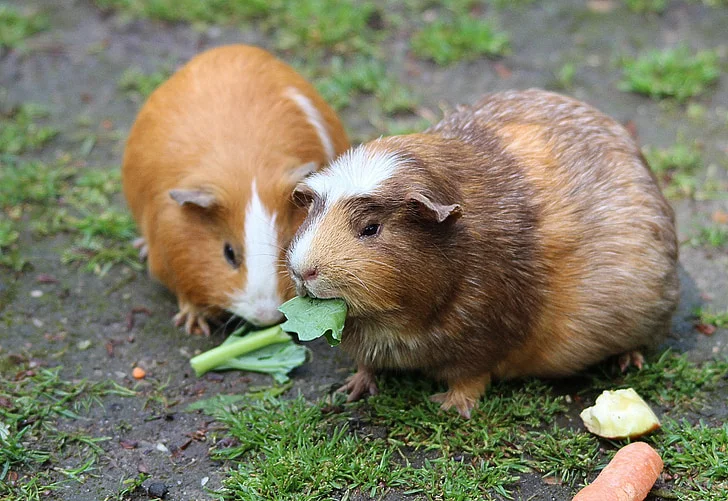
Guinea Pig:
Herbivorous, mainly consuming grasses, hay, and vegetables.
Gerbil:
Omnivorous, with a diet that includes seeds, grains, insects, and vegetation.
Comparison:
Gerbils have a more varied diet, incorporating both plant and animal matter.
Ecological Implications:
Differences in feeding habits influence their ecological roles as consumers within their ecosystems.
16. Intelligence:
Guinea Pig:
Displays social intelligence, forming strong bonds with cage mates and recognizing their owners.
Gerbil:
Intelligent, known for problem-solving abilities and learning from experiences.
Comparison:
Both species exhibit intelligence, with gerbils showing notable problem-solving skills.
Ecological Implications:
Intelligence contributes to survival strategies and adaptation to environmental challenges.
17. Social Behavior:
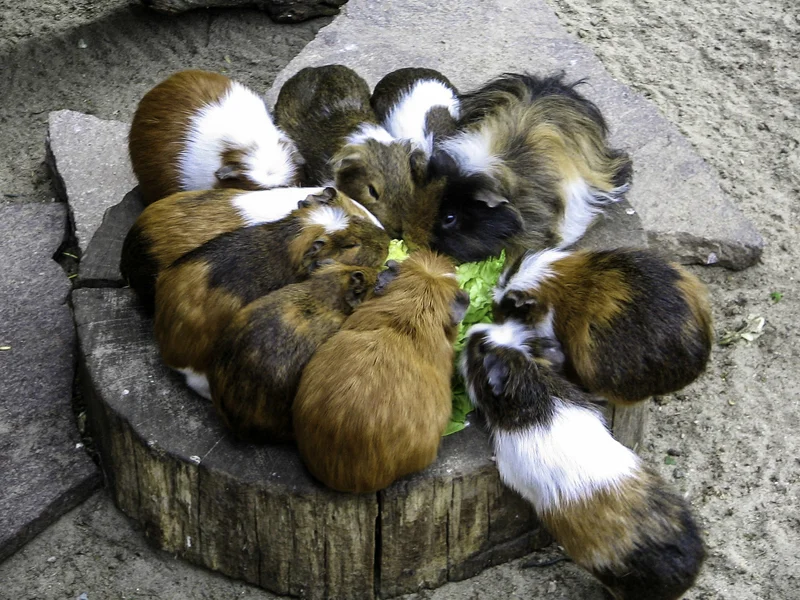
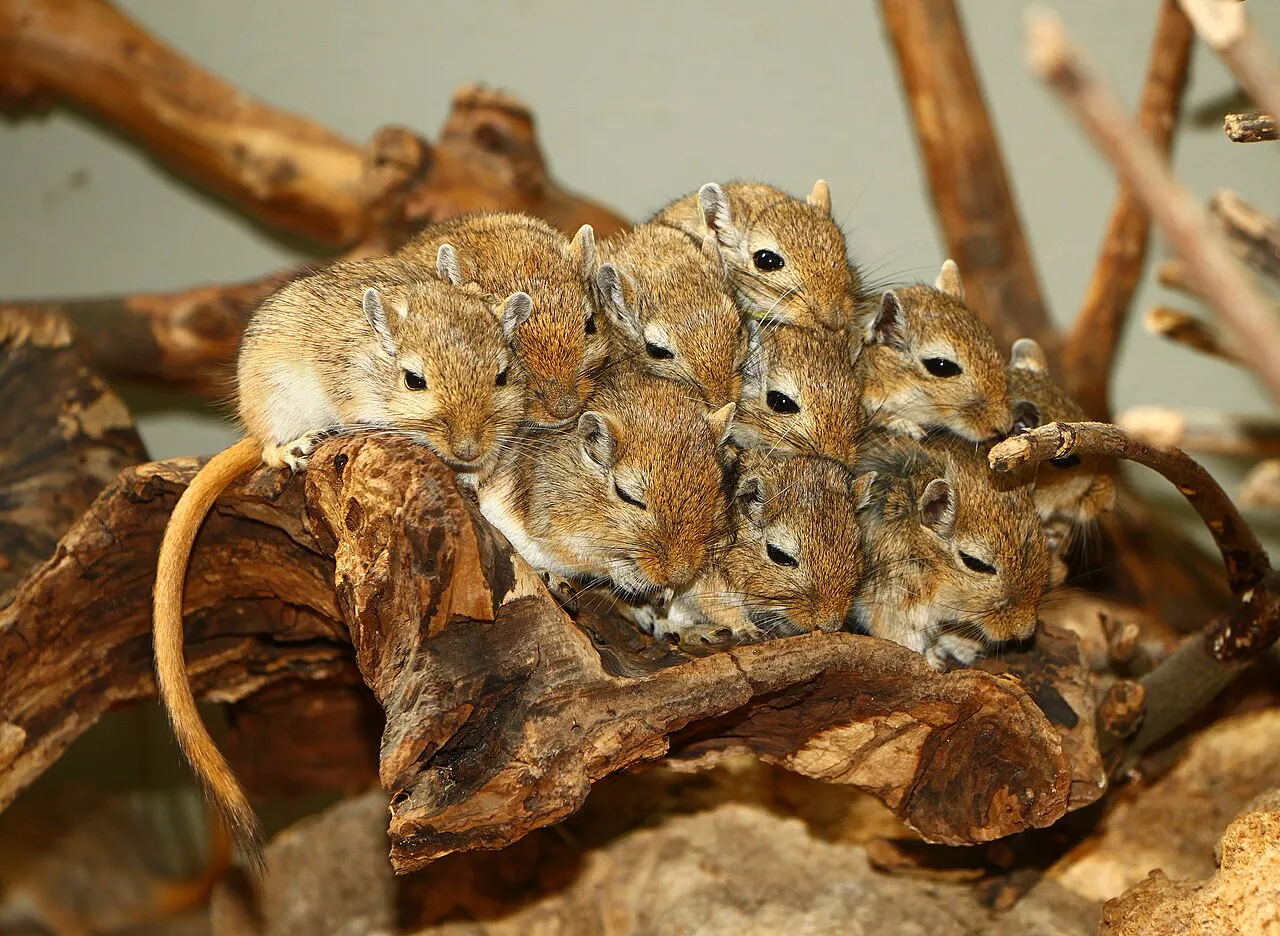
Guinea Pig:
Social animals, thrive in pairs or groups, and exhibit grooming and vocalizations for communication.
Gerbil:
Social animals that live in colonies, often displaying grooming and scent marking behaviors.
Comparison:
Both species are social, but guinea pigs may form stronger bonds with cage mates.
Ecological Implications:
Social behavior is crucial for cooperation, protection, and reproduction within their natural habitats.
18. Mode of Reproduction:
Guinea Pig:
Typically gives birth to a small number of well-developed pups (1-6) after a gestation period of around 59-72 days.
Gerbil:
Has a shorter gestation period of 24-26 days, with litters usually consisting of 3-7 pups.
Comparison:
Guinea pigs have a longer gestation period and generally smaller litters compared to gerbils.
Ecological Implications:
Differences in reproductive strategies may influence population dynamics and adaptation to environmental conditions.
19. Parental Behavior:
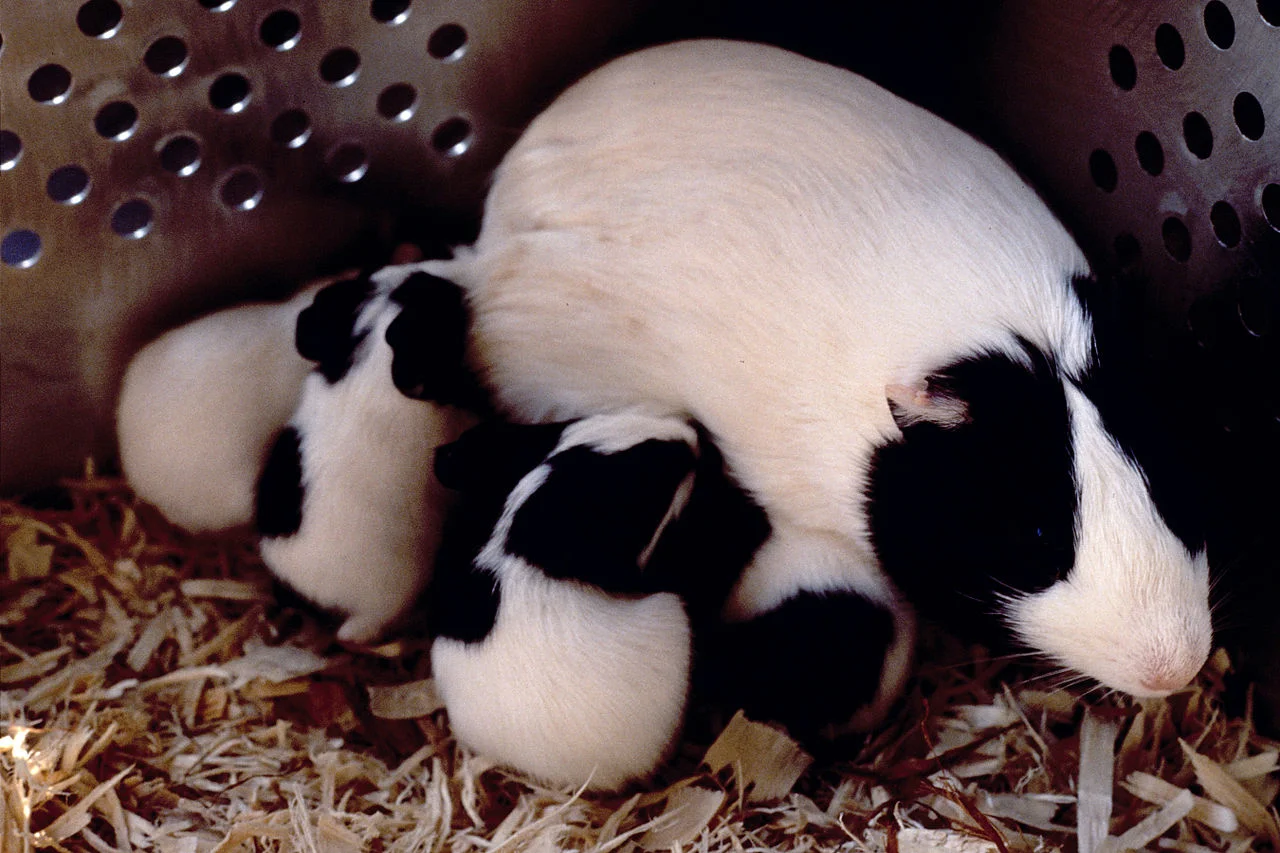
Guinea Pig:
Exhibits strong maternal instincts, with mothers providing care and protection to their pups.
Gerbil:
Both parents participate in caring for the young, with the mother nursing and the father assisting in protection.
Comparison:
Both species display parental care, but guinea pig mothers are particularly devoted.
Ecological Implications:
Parental behavior contributes to the survival of offspring and impacts the overall reproductive success of each species.
20. Proximity to Human-Inhabited Areas:
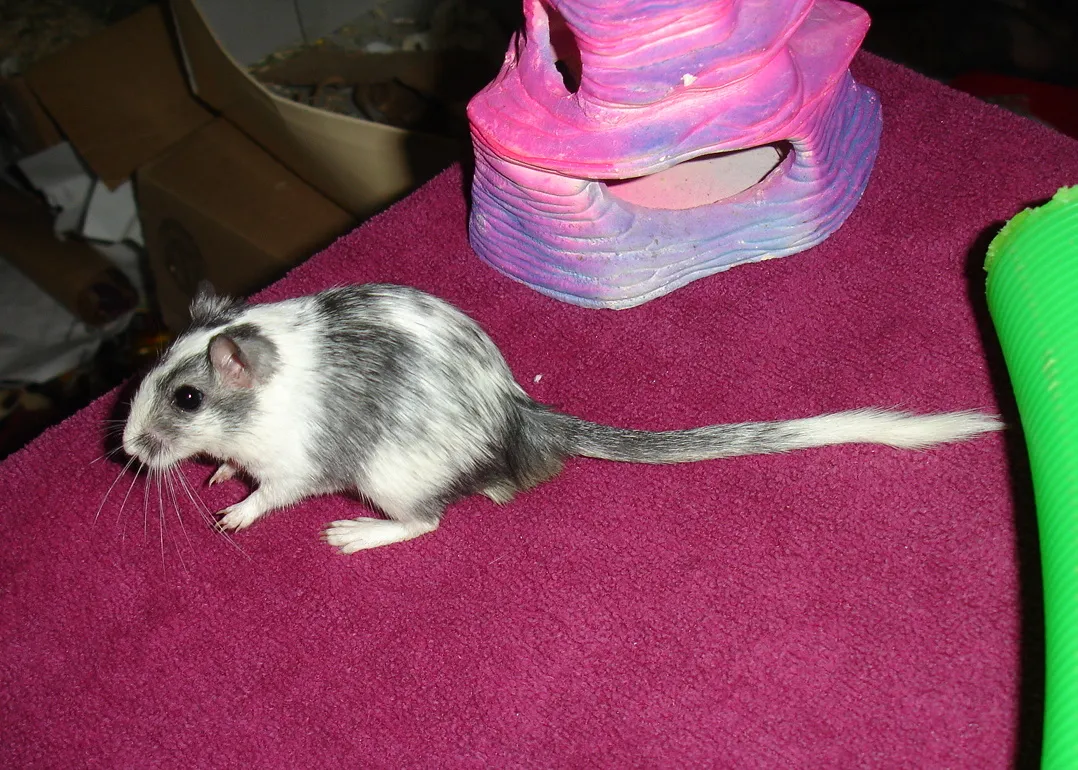
Guinea Pig:
Domesticated and commonly kept as pets; comfortable in human homes.
Gerbil:
Domesticated as pets but may require more specific care compared to guinea pigs.
Comparison:
Both can adapt to human environments, but guinea pigs are often considered more companionable.
Ecological Implications:
Proximity to human habitats may influence their exposure to potential threats or resources.
21. Behavior Toward Humans:
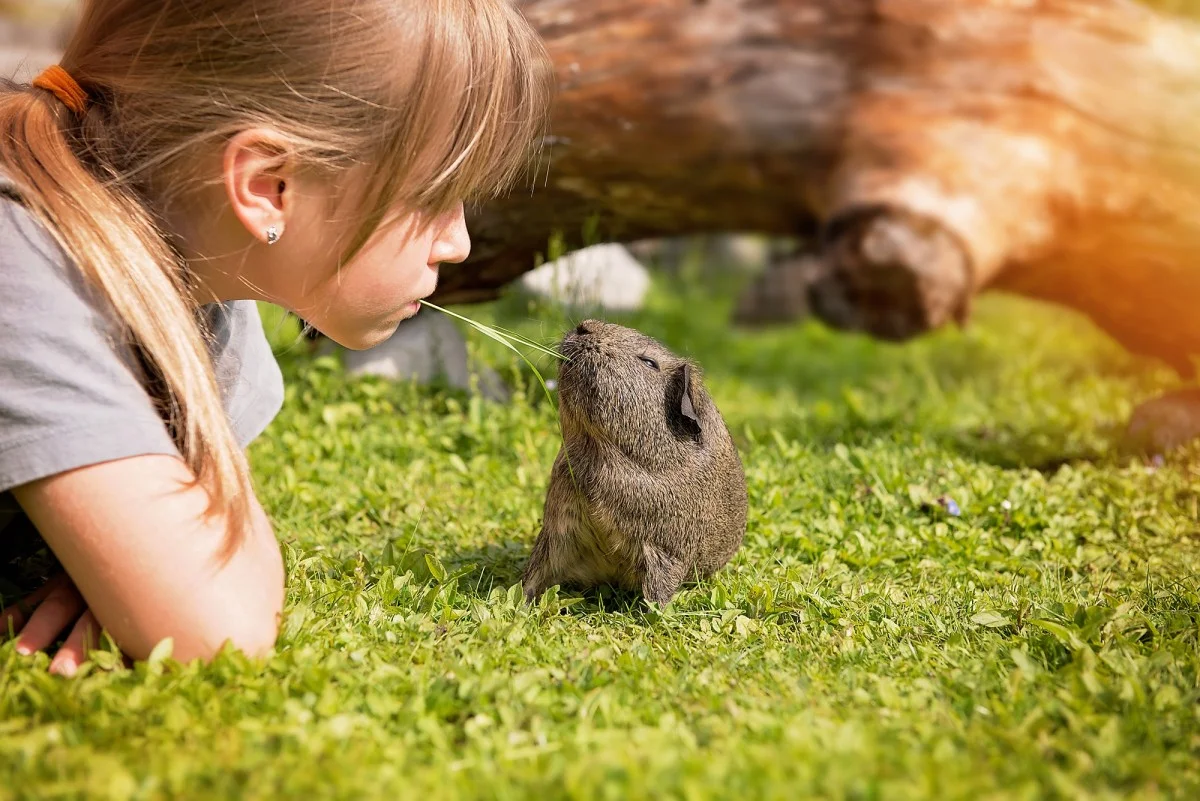
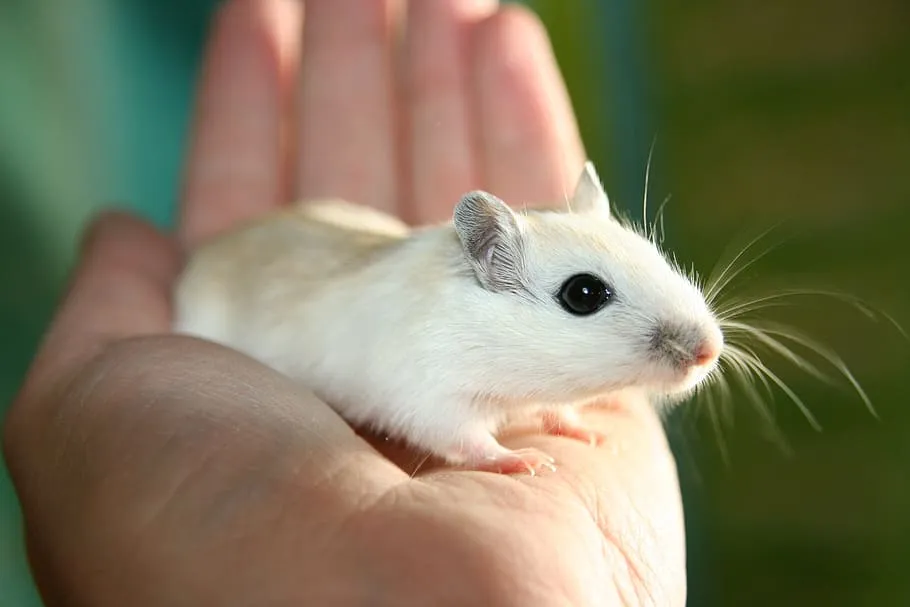
Guinea Pig:
Generally docile and social, often enjoying interaction with their owners.
Gerbil:
Can be friendly and curious but may require careful handling to build trust.
Comparison:
Guinea pigs are often more sociable and adaptable to human interaction.
Ecological Implications:
Behavior toward humans can impact the success of these species as domesticated pets in various cultural and environmental settings.
22. Danger Posed to Humans:
Guinea Pig:
Generally poses minimal danger to humans, as they are docile and rarely exhibit aggressive behavior.
Gerbil:
Low risk, but gerbils can nip if they feel threatened, and their bites may cause minor injuries.
Comparison:
Both species are generally considered safe, but gerbils may be more prone to defensive nipping.
Ecological Implications:
Low danger to humans may contribute to their suitability as pets and their coexistence in human environments.
23. Associated Precautions:
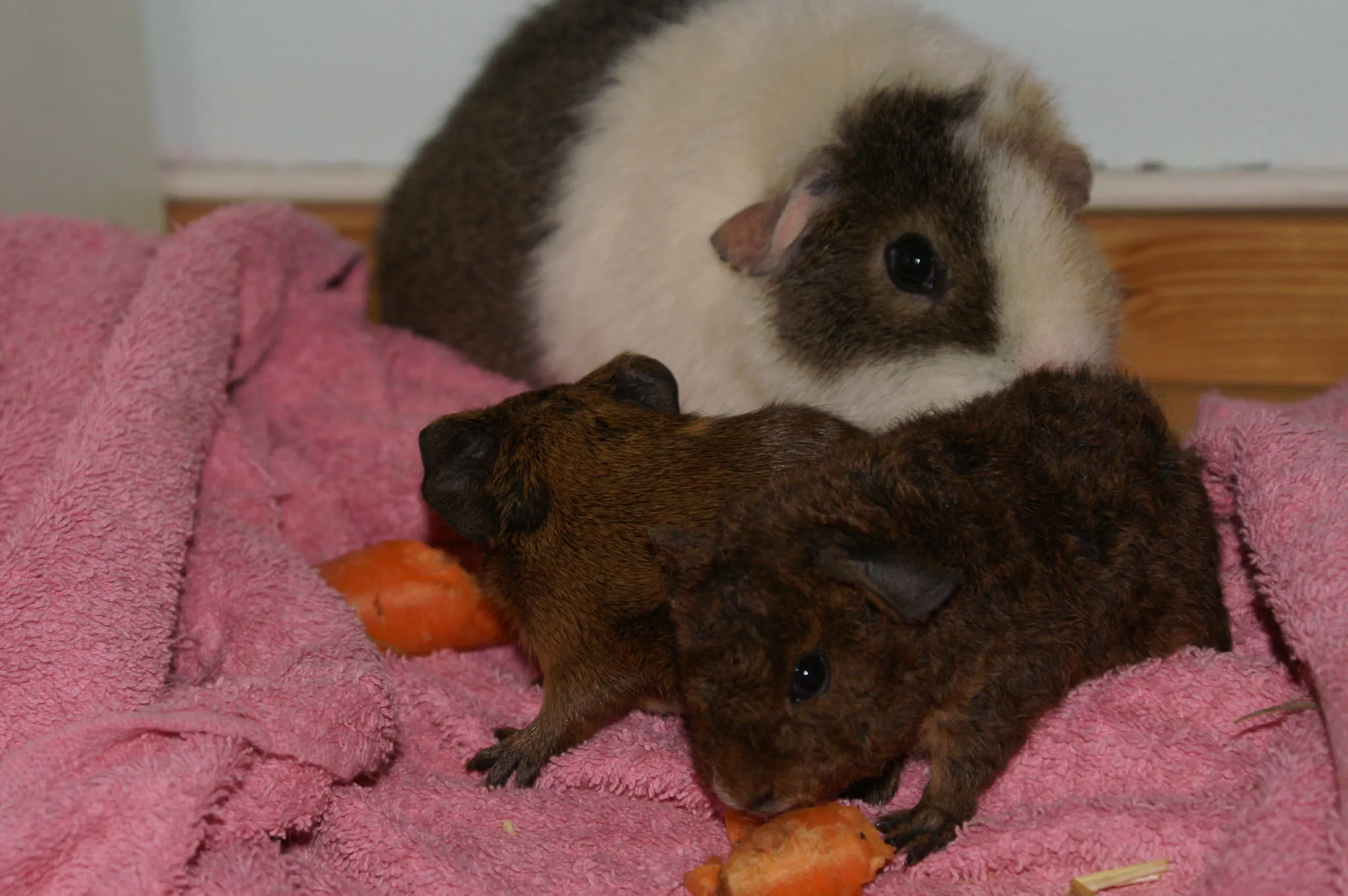
Guinea Pig:
Regular veterinary care, a clean environment, and proper nutrition are essential.
Gerbil:
Attention to dental health, proper cage design, and monitoring for signs of illness are important.
Comparison:
Similar precautions apply, emphasizing species-specific care considerations.
Ecological Implications:
Awareness of their care requirements is crucial for ensuring the well-being of these animals in human care.
24. Conservation Status:
Guinea Pig:
Domesticated; wild populations are not at risk, and they are not listed as a conservation concern.
Gerbil:
Some species face threats in their native habitats, with certain populations listed as vulnerable or endangered.
Comparison:
Gerbils may have higher conservation concerns due to threats in the wild.
Ecological Implications:
Conservation status reflects the impact of human activities on their natural habitats.
*Summary of Comparison
Taxonomy:
Guinea Pig: Caviidae family, Cavia genus.
Gerbil: Muridae family, Gerbillinae subfamily.
Appearance:
Guinea Pig: Compact, stout, rounded face.
Gerbil: Sleek, slender, pointed face.
Size:
Guinea Pig: 8-10 inches.
Gerbil: 4-5 inches.
Weight:
Guinea Pig: 1.5-2.5 pounds.
Gerbil: 2-4 ounces.
Dentition and Bite Force (PSI):
Guinea Pig: Herbivorous, lower documented bite force.
Gerbil: Omnivorous, adapted bite force for varied diet.
Physical Offensive Advantages:
Guinea Pig: Limited offensive capabilities.
Gerbil: Quick and agile.
Physical Defensive Advantages:
Guinea Pig: Limited speed and agility.
Gerbil: Quick reflexes, burrow utilization.
Speed (Km/hour or Mile/hour):
Guinea Pig: 5-10 mph.
Gerbil: Up to 10 mph.
Agility:
Guinea Pig: Moderate agility.
Gerbil: Highly agile.
Senses:
Guinea Pig: Good hearing and smelling, poor eyesight.
Gerbil: Excellent hearing and smelling, keen eyesight.
Overall Physical Capacity:
Guinea Pig: Grazing, moderate activity.
Gerbil: Agile, efficient burrowing.
Habitat Preference(s) and Geographic Region:
Guinea Pig: South America, grassy plains.
Gerbil: Africa, Asia, Middle East, arid regions.
Tracks:
Guinea Pig: Padded feet, signs of grazing.
Gerbil: Bounding hops, burrow entrances.
Lifespan:
Guinea Pig: 5-7 years.
Gerbil: 2-4 years.
Mode of Feeding:
Guinea Pig: Herbivorous.
Gerbil: Omnivorous.
Intelligence:
Guinea Pig: Social intelligence.
Gerbil: Problem-solving abilities.
Social Behavior:
Guinea Pig: Social, strong bonds.
Gerbil: Social, colony living.
Mode of Reproduction:
Guinea Pig: Longer gestation, smaller litters.
Gerbil: Shorter gestation, larger litters.
Parental Behavior:
Guinea Pig: Strong maternal instincts.
Gerbil: Both parents care for young.
Proximity to Human-Inhabited Areas:
Guinea Pig: Domesticated, common pets.
Gerbil: Domesticated, may require specific care.
Behavior Toward Humans:
Guinea Pig: Docile, enjoys interaction.
Gerbil: Friendly, may require careful handling.
Danger Posed to Humans:
Guinea Pig: Minimal danger, docile.
Gerbil: Low risk, may nip if threatened.
Associated Precautions:
Guinea Pig: Regular vet care, clean environment.
Gerbil: Dental care, proper cage design.
Conservation Status:
Guinea Pig: Domesticated, not at risk.
Gerbil: Some species vulnerable or endangered.
Conclusion
I. Similarities:
Both are rodents belonging to the order Rodentia.
Domesticated and kept as pets in various parts of the world.
II. Differences:
Varying sizes, with guinea pigs being larger.
Distinctive appearances and coat patterns.
Differences in reproductive strategies and parental behavior.
Varied ecological adaptations, including habitat preferences and diet.
